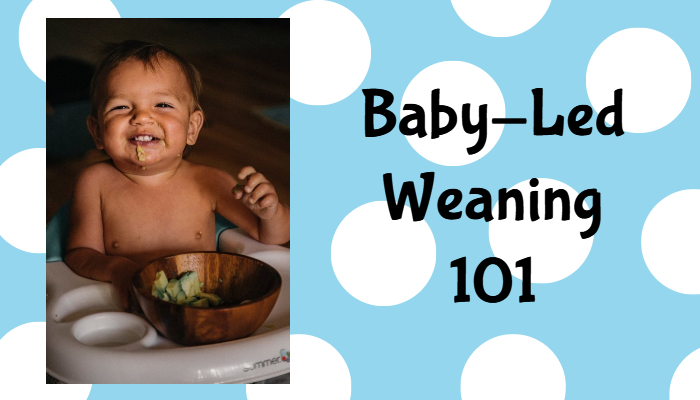By TMoM Team Member, Anna Keller
Baby-led weaning is a term thrown around often, and I think most of us parents have a general sense of the concept, but it’s also something that can seem daunting or even, to some, dangerous. After all, babies have just had breastmilk or formula up to this point, so bypassing pureed foods altogether might seem like a big (and perhaps logical) step is missing.
Essentially, with baby-led weaning, you’re preparing food to be easy for baby to grab onto and feed to himself rather than pureeing everything and then introducing it on a spoon.
If you’re the parent of a baby not yet eating solids and are interested in learning a bit more about baby-led weaning, here’s a quick overview to help you get the lay of the land. (And remember: There’s not one single right way to introduce your baby to solids. If you go the baby-led weaning route, that’s great! If you choose another approach, that will be just fine, too.)
First, some benefits to this approach:
- Baby-led weaning can support eye/hand coordination, chewing skills, and dexterity.
- It can allow babies to explore a broader variety of foods earlier. They aren’t getting just flavor with this approach; they’re also experiencing texture and aroma in a different way than with pureed foods.
- It helps babies become intuitive eaters, because they – rather than a parent with a spoon – are controlling how much food they consume at each sitting.
A few things to know as you prepare for baby-led weaning:
- Look for the signs your baby is ready for this approach. You want to be sure she can sit up unassisted in her high chair and have good neck strength.
- Make the food easy to grab. Long, thin strips of food or large enough chunks for her to grab tend to work especially well.
- Ensure your little one can move food around in her mouth rather than just spit it out. She also needs to be paying lots of attention to food (watching you eat, reaching for your food, etc.) to be ready for baby-led weaning.
- Keep the milk flowing. Your child still definitely needs breastmilk or formula (until 12 months or so).
- Stay close by. No, your child won’t need you to spoon feed him, but be sure you are right beside him to supervise the process.
- Get ready for a mess. That’s part of it! Your baby will likely spread food all over herself as well as add it to the floor and smear it all over her high chair. That process is helping her develop a fuller experience of the food, so just go with it.
- Give it time. Plan on 15 minutes per meal, at minimum, to give your baby a chance to explore the food.
- Choose a variety of foods. Try to make sure your little one is getting access to foods with a variety of flavor, texture, and color, but also nutrients.
Some great foods to start with:
- Roasted sweet potato wedges
- Banana (leave some of the peel on)
- Toast sticks
- Avocado spears
- Roasted/steamed broccoli florets
- Steamed asparagus spears
- Halved blackberries
- Roasted and cubed squash
This approach isn’t right for every baby OR every family, so if it doesn’t seem to be working for whatever reason, don’t be afraid to try something else.
For more blogs and tips on new babies, click here! Want to see more blogs like this and get notifications on local events and happenings? Subscribe to TMoM”s free weekly newsletters here.















I think as a parent we look more towards our convenience towards feeding the child more than his development in skills of reaching out for food. Baby weaning is an approach that parents must adopt as soon as possible. The points in the article are good and help a lot.